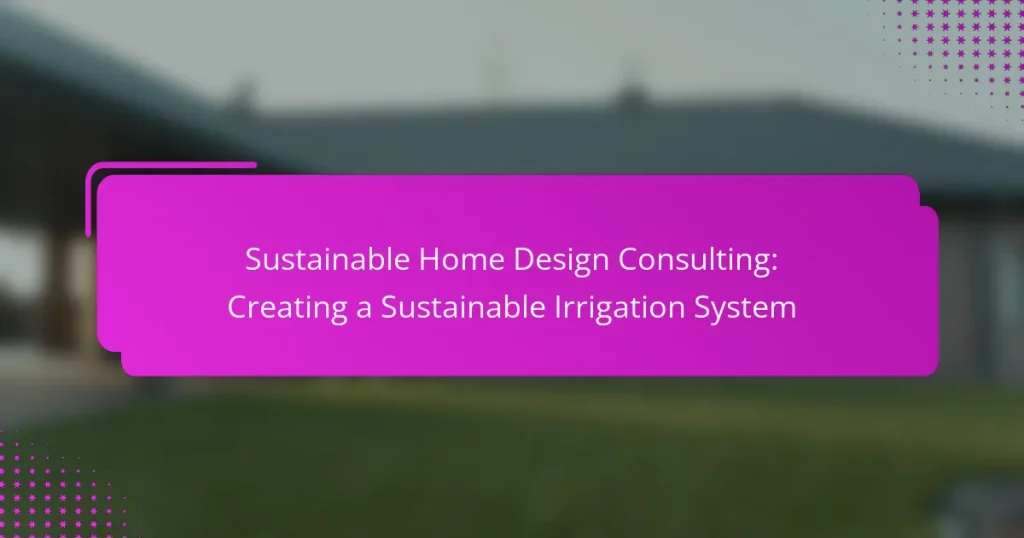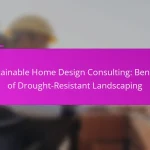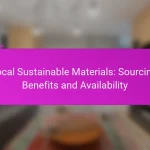Creating a sustainable irrigation system is essential for homeowners looking to conserve water and promote eco-friendly practices. By incorporating methods such as drip irrigation, rainwater harvesting, and greywater recycling, you can significantly reduce water usage while ensuring healthy plant growth. A well-designed system not only saves costs but also enhances the resilience of your landscape, making it both beautiful and environmentally responsible.

What are the best sustainable irrigation systems for homes?
The best sustainable irrigation systems for homes include drip irrigation, rainwater harvesting, smart irrigation controllers, and greywater recycling. Each system offers unique benefits and considerations that can significantly reduce water usage and promote eco-friendly practices.
Drip irrigation systems
Drip irrigation systems deliver water directly to the roots of plants through a network of tubing and emitters. This method minimizes evaporation and runoff, making it highly efficient for watering gardens and landscapes.
When considering drip irrigation, assess the layout of your garden and the types of plants you have. A well-designed system can reduce water usage by up to 50% compared to traditional methods. Regular maintenance is essential to prevent clogging of emitters.
Rainwater harvesting systems
Rainwater harvesting systems collect and store rainwater from rooftops for irrigation and other non-potable uses. This system can significantly reduce reliance on municipal water supplies and lower water bills.
To implement a rainwater harvesting system, install gutters and downspouts that direct water into storage tanks. Ensure that your system complies with local regulations regarding water quality and usage. A properly sized tank can provide sufficient water for garden irrigation during dry periods.
Smart irrigation controllers
Smart irrigation controllers use weather data and soil moisture levels to optimize watering schedules. These devices adjust the amount of water delivered based on current conditions, preventing overwatering and conserving resources.
When selecting a smart controller, look for models compatible with local weather stations or those that connect to Wi-Fi for real-time updates. Many systems can save homeowners 20-50% on water usage, making them a cost-effective choice for sustainable irrigation.
Greywater recycling systems
Greywater recycling systems repurpose wastewater from sinks, showers, and laundry for irrigation. This approach reduces water waste and can be a sustainable solution for maintaining landscapes.
To install a greywater system, ensure it meets local health and safety regulations. Simple systems can be DIY projects, while more complex setups may require professional installation. Always use biodegradable soaps to prevent harmful chemicals from entering the irrigation system.
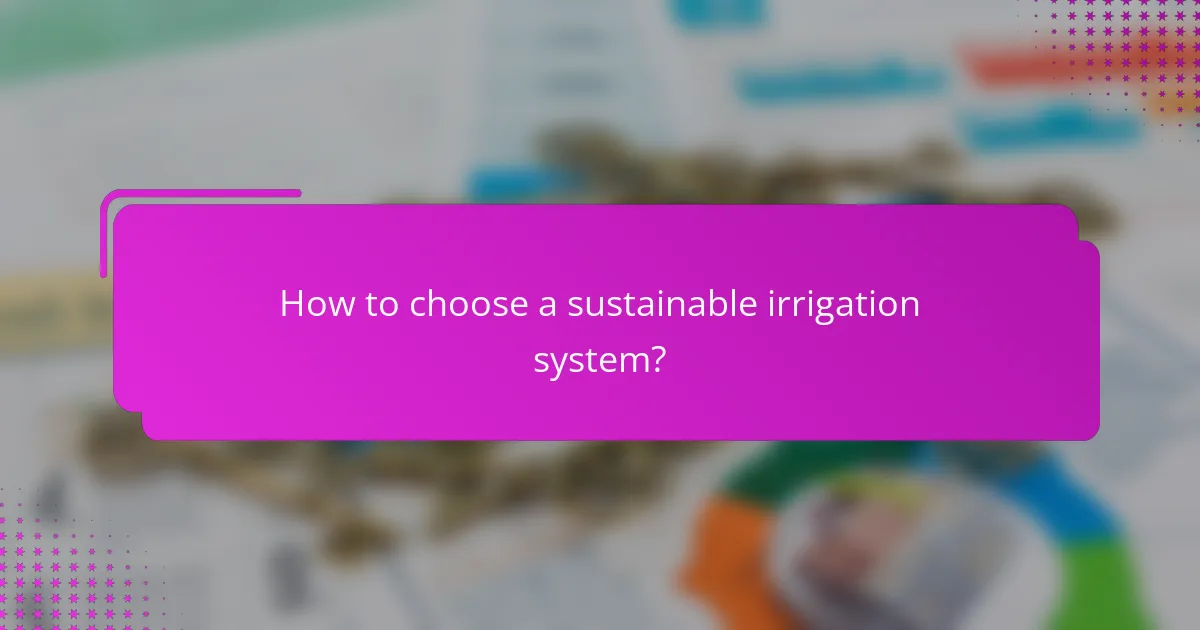
How to choose a sustainable irrigation system?
Choosing a sustainable irrigation system involves assessing water availability, evaluating soil type, and considering the types of plants you intend to grow. A well-designed system can conserve water, reduce costs, and promote healthy plant growth.
Assessing water availability
Start by determining the sources of water available for irrigation, such as rainfall, groundwater, or surface water. Consider the quantity and reliability of these sources, as well as any local regulations regarding water usage.
For example, if relying on rainfall, calculate the average annual precipitation in your area to estimate how much supplemental irrigation may be needed. In regions with limited water supply, rainwater harvesting systems can be an effective solution.
Evaluating soil type
Understanding your soil type is crucial for selecting an appropriate irrigation system. Different soils have varying drainage capabilities and water retention properties, which affect how much water your plants will need.
Conduct a soil test to identify its texture and composition. Sandy soils drain quickly and may require more frequent watering, while clay soils retain moisture longer but can become waterlogged. Adjust your irrigation strategy accordingly to optimize water usage.
Considering plant types
The types of plants you choose will significantly influence your irrigation system design. Native and drought-resistant plants typically require less water and can thrive with minimal irrigation.
Group plants with similar water needs together to create zones within your irrigation system. This approach allows for more efficient watering and reduces waste. For instance, succulents and cacti can be placed in a separate zone from lush, water-loving plants like ferns.
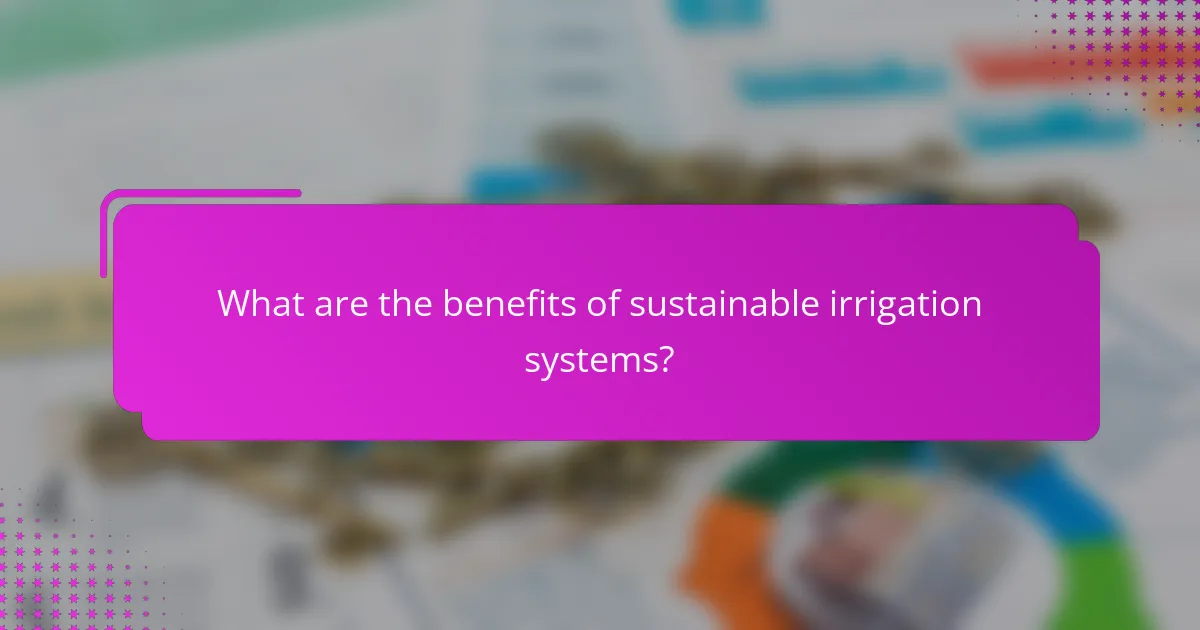
What are the benefits of sustainable irrigation systems?
Sustainable irrigation systems provide numerous advantages, including efficient water use, cost savings, and reduced environmental impact. By implementing these systems, homeowners can create a more resilient landscape while conserving valuable resources.
Water conservation
Sustainable irrigation systems prioritize water conservation by utilizing techniques that minimize waste. Drip irrigation, for example, delivers water directly to the plant roots, reducing evaporation and runoff. Homeowners can save significant amounts of water, often achieving reductions of 30-50% compared to traditional methods.
Additionally, rainwater harvesting systems can be integrated, allowing for the collection and storage of rainwater for irrigation purposes. This not only conserves potable water but also helps manage stormwater runoff, promoting a healthier ecosystem.
Cost savings
Implementing a sustainable irrigation system can lead to substantial cost savings over time. While the initial investment may be higher, the reduction in water bills can offset these costs within a few years. Homeowners can expect savings of 20-40% on their water expenses with efficient systems.
Moreover, sustainable systems often require less maintenance and fewer resources, further lowering long-term costs. Utilizing native plants that require less water can also enhance savings by reducing the need for additional irrigation.
Environmental impact
The environmental impact of sustainable irrigation systems is significantly positive. By reducing water consumption, these systems help preserve local water supplies and protect aquatic ecosystems. This is particularly crucial in areas facing drought or water scarcity.
Furthermore, sustainable irrigation practices can enhance soil health and promote biodiversity. By using organic mulches and avoiding chemical fertilizers, homeowners can create a thriving environment for beneficial organisms, contributing to a more balanced ecosystem.
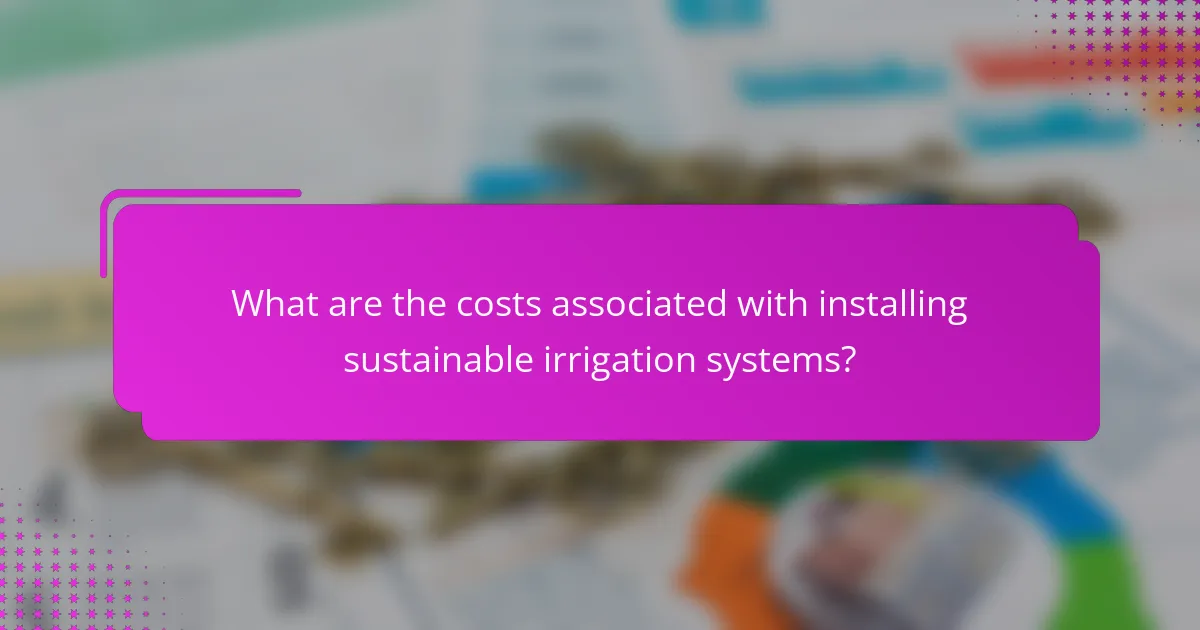
What are the costs associated with installing sustainable irrigation systems?
The costs of installing sustainable irrigation systems can vary significantly based on system type, size, and complexity. Generally, homeowners should anticipate both initial setup costs and ongoing maintenance expenses, along with potential financial incentives that can offset these investments.
Initial setup costs
Initial setup costs for sustainable irrigation systems typically range from a few hundred to several thousand dollars. Factors influencing these costs include the size of the area to be irrigated, the type of system selected (such as drip or sprinkler), and any necessary landscaping modifications. For example, a basic drip irrigation system for a small garden may cost around $500, while larger, more complex systems can exceed $5,000.
It’s essential to consider the quality of materials and technology used, as investing in durable components can lead to long-term savings. Additionally, hiring a professional for installation may increase upfront costs but can ensure optimal system performance and efficiency.
Maintenance costs
Maintenance costs for sustainable irrigation systems are generally lower than traditional systems, averaging between $100 to $300 annually. Regular maintenance includes checking for leaks, cleaning filters, and adjusting settings based on seasonal changes. Proper upkeep can enhance system longevity and efficiency, reducing water waste.
Homeowners should also factor in potential repairs or replacements of components, which can vary based on usage and environmental conditions. For instance, replacing a malfunctioning valve may cost around $50 to $150, depending on the part and labor involved.
Potential rebates and incentives
Many regions offer rebates and incentives to encourage the adoption of sustainable irrigation systems, which can significantly reduce overall costs. Homeowners may find local programs that provide financial assistance or tax credits for installing water-efficient systems. For example, some municipalities offer rebates of up to 50% of installation costs, making sustainable options more accessible.
To take advantage of these incentives, homeowners should research local regulations and programs, as availability and amounts can vary widely. It’s advisable to keep all receipts and documentation to ensure eligibility for any rebates or tax benefits.
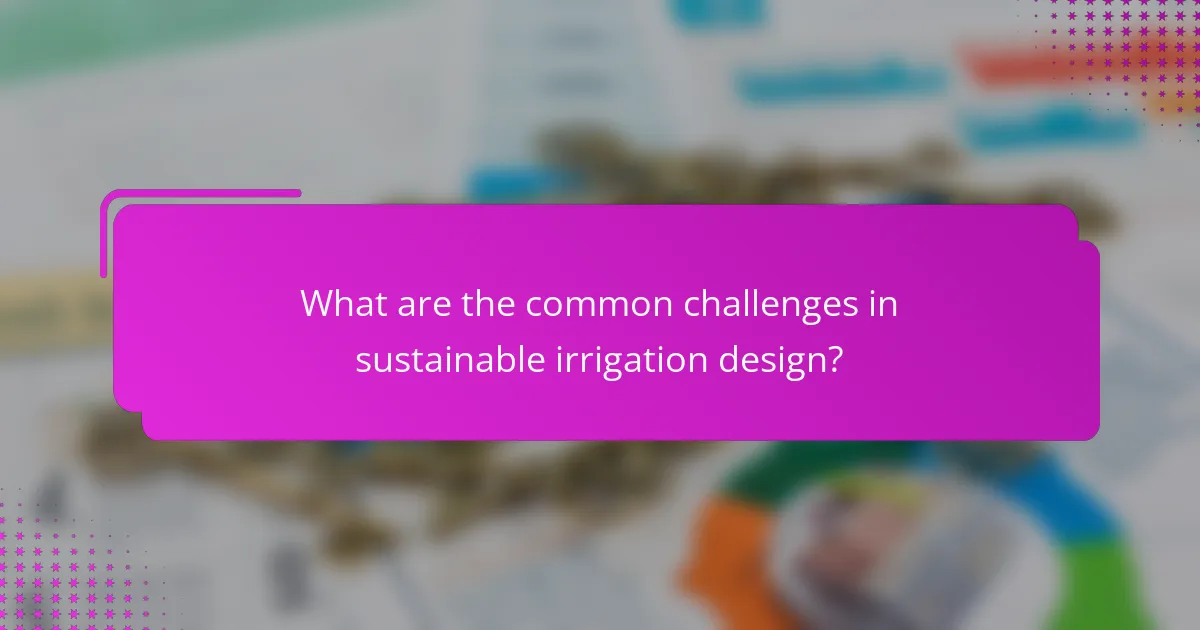
What are the common challenges in sustainable irrigation design?
Sustainable irrigation design faces several challenges that can hinder effective implementation. Key issues include site-specific limitations, regulatory compliance, and technology integration, each requiring careful consideration to achieve optimal water management.
Site-specific limitations
Site-specific limitations refer to the unique characteristics of a location that can affect irrigation design. Factors such as soil type, topography, and climate conditions play a significant role in determining the most suitable irrigation methods. For example, sandy soils may require more frequent watering, while clay soils retain moisture longer.
Understanding these limitations is essential for creating an efficient irrigation system. Conducting a thorough site assessment can help identify the best practices tailored to the specific environment, ensuring water conservation and plant health.
Regulatory compliance
Regulatory compliance involves adhering to local laws and guidelines governing water usage and irrigation practices. Many regions have specific regulations aimed at promoting sustainable water management, which can impact irrigation design choices. Familiarizing yourself with these regulations is crucial to avoid potential fines or project delays.
For instance, some areas may restrict the use of certain irrigation technologies or require permits for water extraction. Engaging with local authorities early in the design process can help navigate these requirements effectively.
Technology integration
Technology integration is a challenge that involves incorporating advanced irrigation technologies into sustainable designs. Options such as drip irrigation, smart controllers, and moisture sensors can enhance efficiency but may require specialized knowledge and investment. Assessing the cost-benefit ratio of these technologies is vital for successful implementation.
When selecting technology, consider factors like ease of use, maintenance requirements, and compatibility with existing systems. A well-planned integration can lead to significant water savings and improved crop yields, making it a worthwhile investment for sustainable irrigation projects.
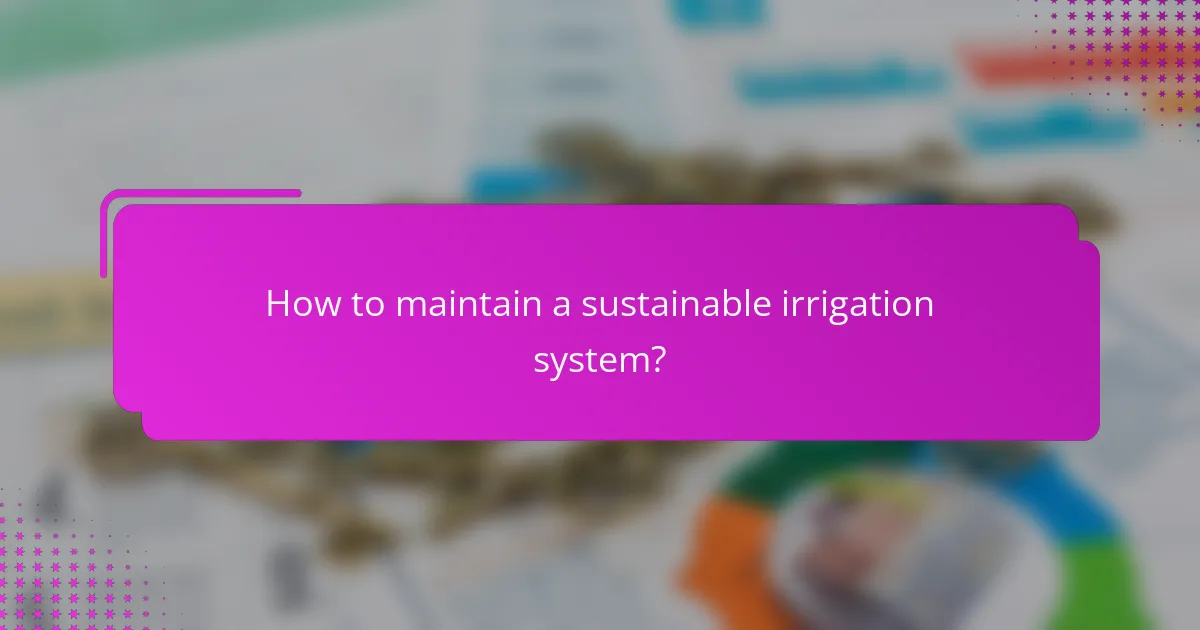
How to maintain a sustainable irrigation system?
Maintaining a sustainable irrigation system involves regular monitoring, efficient water use, and adapting to environmental changes. Key practices include checking for leaks, adjusting schedules based on weather, and ensuring the system is optimized for plant needs.
Regular Monitoring and Maintenance
Consistent monitoring is crucial for a sustainable irrigation system. Check for leaks, clogs, and wear in hoses and fittings at least once a month. Regularly inspect sprinkler heads to ensure they are functioning correctly and not wasting water.
Additionally, consider seasonal adjustments. For instance, during dry months, you may need to increase watering frequency, while in rainy seasons, reduce it to avoid overwatering. Using soil moisture sensors can help determine when irrigation is truly necessary.
Efficient Water Use
Efficient water use is essential for sustainability. Drip irrigation systems are often more effective than traditional sprinklers, delivering water directly to the plant roots and minimizing evaporation. Aim for a system that applies water slowly and deeply to encourage healthy root growth.
Implementing rainwater harvesting can also enhance efficiency. Collecting rainwater in barrels or cisterns provides an alternative water source for irrigation, reducing reliance on municipal supplies and lowering costs.
Adapting to Environmental Changes
Adapting your irrigation practices to environmental changes is vital for sustainability. Monitor local weather patterns and adjust your irrigation schedule accordingly. For example, if a drought is declared, reduce water usage and explore drought-resistant plant options.
Stay informed about local regulations regarding water use, especially during dry spells. Many regions have guidelines to conserve water, which may include restrictions on irrigation times or methods. Compliance not only helps the environment but can also prevent fines.
